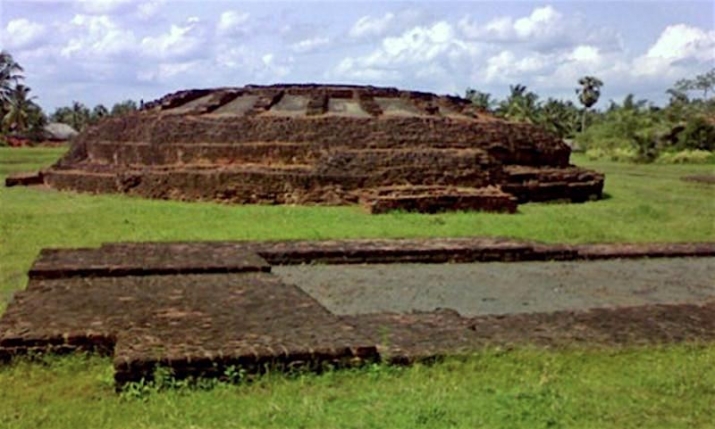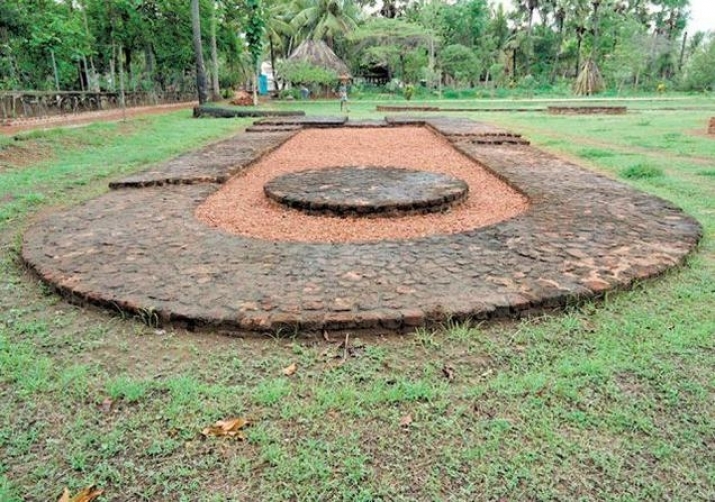NEWS
Adurru Buddhist Site in Andhra Pradesh Lies Neglected
 Relics of a bygone era at Adurru. From hoparoundindia.com
Relics of a bygone era at Adurru. From hoparoundindia.comPerhaps overshadowed by the higher-profile site at nearby Amaravati, the 2,400-year old Buddhist center of Adurru, in the southeastern Indian state of Andhra Pradesh, has lain neglected for several decades due to an apparent lack of interest from the state government in maintaining this potential tourist destination.
The site, known locally as Dubaraju Dibba, is located in East Gavari District some six miles from the Bay of Bengal on the western bank of the Vainetaya River—a branch of the Godavari River, India’s second-longest river after the Ganges. The ancient Buddhist center was first excavated by the Archaeological Survey of India (ASI) in 1923 and was declared a protected monument in 1955. It is currently being maintained to a limited degree by the Buddha Vihar Trust, a local organization formed by a group of retirees.
“We have been running the trust and taking care of the monument for the last 30 years,” said S. S. R. Bhupathi, member-secretary of the Buddha Vihar Trust. “There are no infrastructure facilities, basic amenities, and even road connectivity to this place,” he lamented. (The Hindu)
Excavations at Adurru by the ASI in 1953 uncovered numerous historic remains, including stupas, chaityas (Buddhist shrines or prayer halls), and viharas (Buddhist monasteries). Among the more notable relics is the Mahastupa or main stupa, which, with a diameter of 17 feet, is built in the shape of a giant wheel atop a raised platform. It is surrounded by vedika (partitioning) structures and ayaka (altars or offering platforms) that mark the cardinal directions. The excavations also unearthed a wealth of other historical artifacts, including ancient jars, dishes, red pottery, and kaolin bowls.
 The 2,400-year-old Buddhist center at Adurru. From thehindu.com
The 2,400-year-old Buddhist center at Adurru. From thehindu.comOther notable finds at the site include two smaller stupas constructed in the same wheel-shaped design as the Mahastupa, which stand at the east-facing “front” of the site, a series of interconnected circular and square structures adorning the west of the site, and an underground passage that extends to the river.
Historians believe the Mahastupa was constructed during the reign of the Indian emperor Ashoka (r. c. 268–232 BCE), whose empire encompassed much of the Indian subcontinent. Ashoka was instrumental in the spread of Buddhism throughout South and Central Asia, and is credited with ordering the construction of thousands of monasteries, stupas, and other Buddhist monuments across the region. One of the foundation stones at the site is believed to have been laid by the renowned Buddhist nun Sanghamitra, the daughter of Ashoka, who was en route to Sri Lanka to spread the teachings of the Buddha.
See more
Adurru Buddhist site lies ignored (The Hindu)
Adurru Buddhist Site (Journey Planner)
About Buddhist Site Information-Adurru (Hop Around India)














